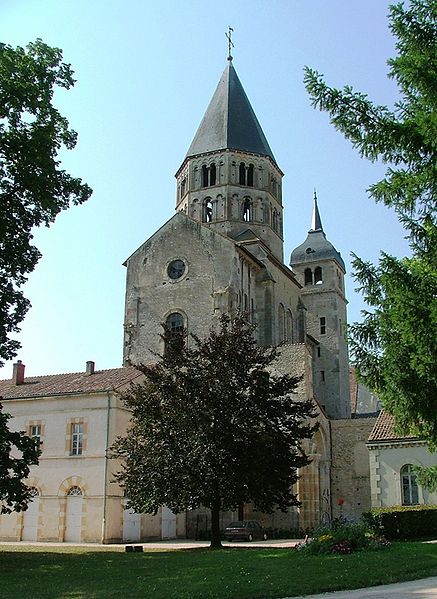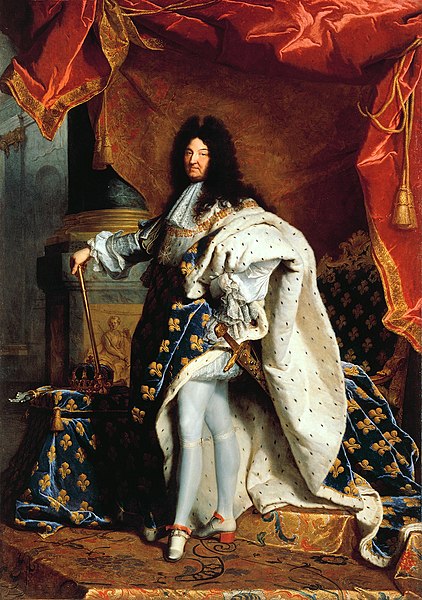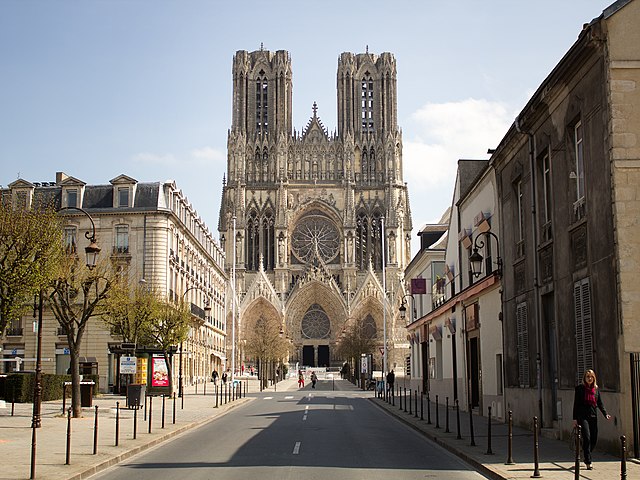France in the Middle Ages
The Kingdom of France in the Middle Ages was marked by the fragmentation of the Carolingian Empire and West Francia (843–987); the expansion of royal control by the House of Capet (987–1328), including their struggles with the virtually independent principalities, and the creation and extension of administrative/state control in the 13th century; and the rise of the House of Valois (1328–1589), including the protracted dynastic crisis against the House of Plantagenet and their Angevin Empire, culminating in the Hundred Years' War (1337–1453), which laid the seeds for a more centralized and expanded state in the early modern period and the creation of a sense of French identity.
France at the Coronation of Hugh Capet
A view of the remains of the Abbey of Cluny, a Benedictine monastery, was the centre of monastic life revival in the Middle Ages and marked an important step in the cultural rebirth following the Early Middle Ages.
Godefroy de Bouillon, a French knight, leader of the First Crusade and founder of the Kingdom of Jerusalem.
Philip II victorious at Bouvines thus annexing Normandy and Anjou into his royal domains. This battle involved a complex set of alliances from three important states, the Kingdoms of France and England and the Holy Roman Empire.
The Kingdom of France is the historiographical name or umbrella term given to various political entities of France in the medieval and early modern period. It was one of the most powerful states in Europe since the High Middle Ages. It was also an early colonial power, with colonies in Asia and Africa, and the largest being New France in North America centred around the Great Lakes.
Louis XIV, a 1701 portrait by Hyacinthe Rigaud
The provinces of the Kingdom of France in 1789
An 1841 portrait of Louis Philippe I by Franz Xaver Winterhalter
The Reims Cathedral, built where Clovis I was baptised by Remigius, functioned as the site for the coronations of the kings of France in the kingdom








